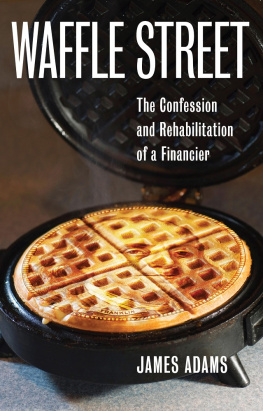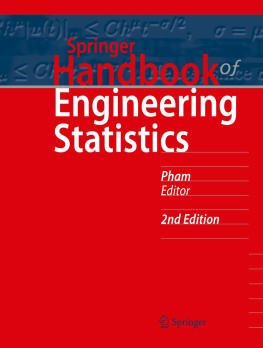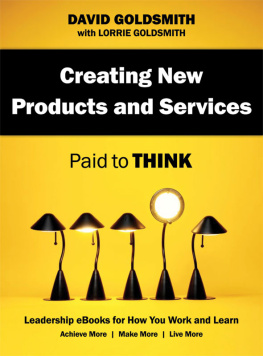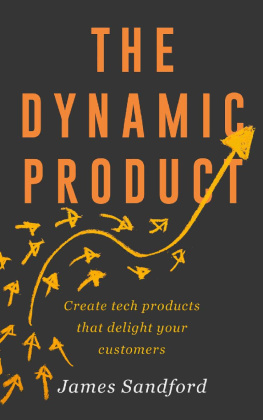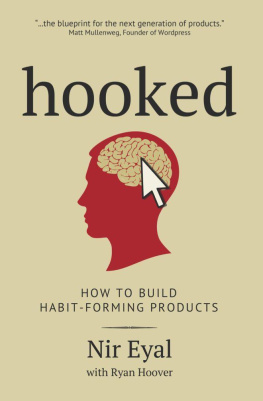James Adams - Good Products, Bad Products: Essential Elements to Achieving Superior Quality
Here you can read online James Adams - Good Products, Bad Products: Essential Elements to Achieving Superior Quality full text of the book (entire story) in english for free. Download pdf and epub, get meaning, cover and reviews about this ebook. year: 2012, publisher: McGraw-Hill Education, genre: Politics. Description of the work, (preface) as well as reviews are available. Best literature library LitArk.com created for fans of good reading and offers a wide selection of genres:
Romance novel
Science fiction
Adventure
Detective
Science
History
Home and family
Prose
Art
Politics
Computer
Non-fiction
Religion
Business
Children
Humor
Choose a favorite category and find really read worthwhile books. Enjoy immersion in the world of imagination, feel the emotions of the characters or learn something new for yourself, make an fascinating discovery.

- Book:Good Products, Bad Products: Essential Elements to Achieving Superior Quality
- Author:
- Publisher:McGraw-Hill Education
- Genre:
- Year:2012
- Rating:3 / 5
- Favourites:Add to favourites
- Your mark:
Good Products, Bad Products: Essential Elements to Achieving Superior Quality: summary, description and annotation
We offer to read an annotation, description, summary or preface (depends on what the author of the book "Good Products, Bad Products: Essential Elements to Achieving Superior Quality" wrote himself). If you haven't found the necessary information about the book — write in the comments, we will try to find it.
This book is the most comprehensive discussion of all the elements that go into producing superior products that I have read. I have thought a lot about quality over many years, yet the thinking reflected throughout [this] discussion is a real eye-opener for me. For anyone seriously interested in quality, this is a must read.
Donald E. Petersen, retired President and Chairman, Ford Motor Company
This is a book only a legend like Jim Adams could write. Based on a very popular course Jim taught at Stanford for many years, it should be required reading for every engineering student interested in designing great products. Great products lead to great companies that change the world. Every aspiring engineer wants to have an impact and this book will absolutely help. Read it!
James D. Plummer, Dean, School of Engineering, Stanford University
Drawing on fifty years of engineering experience, ranging from car design to rocket science, Stanford professor Jim Adams takes us on an engaging and eclectic journey through the evolution of what makes good products tick. With the same irrepressible curiosity Adams displayed in Conceptual Blockbusting, he shares insights into the underlying characteristics that separate products into the good, the bad, and the ugly.
Tom Kelley, General Manager, IDEO, and author of The Art of Innovation and The Ten Faces of Innovation
Adams has a high-level and holistic view of the design of everyday things and the issues confronting those who develop them. If you design things, you will enjoy this book and benefit from Jims wisdom and experience.
Bill Moggridge, Director of the Smithsonians Cooper-Hewitt National Design Museum, and author of Designing Interactions and Designing Media
Jim Adams is a gift. He understands the true essence of quality, blending what works with whats beautiful. Here this master teacher shares his special wisdom: how to create that magical experience of a product we love, one that evokes Wow, this is really cool! His timeless, inspired message could not be more timely.
Jim Collins, author of Good to Great and coauthor of Built to Last and Great by Choice
About the Book:
What is the secret behind every successful product? Why are people willing to pay more for a BMW than a Chevrolet? How could Apple iPhones represent only 4% of the worlds cell phone market in 2010 but take in 50% of the profits?
The answer is QUALITY.
In this provocative new book, bestselling author James L. Adams provides a brilliant, in-depth look at the powerful but elusive qualities that can make or break a products success. A must-read for managers, designers, manufacturers, engineers, and marketers, this groundbreaking approach will change the way you think about your productand show you why its more important than ever to deliver the highest quality possible.
In Good Products, Bad Products, youll learn how to:
- Maximize your products performanceand minimize the cost
- Appeal to your customers emotionswith elegance and sophistication
- Make sure your product is a perfect fitthats human, cultural, and global
With competition growing stronger and fiercer every year, product quality has become the number-one factor in a companys success. Adams points out that there will always be a stable demand for a high-quality product.
By addressing every aspect of product qualityfrom the technical to the practical to the aestheticyou can develop a product that your company will be proud of and your customers will love.
Along the way, youll hear fascinating case studies of famous brands that became victims of their own successlike Kodak, IBM, Zenith, and GMand struggled to recover lost ground. Youll see how some countries like Japan surged ahead by offering better products than anyone on the globe. Youll learn how some U.S. manufacturers remained successful in spite of the foreign markets lower wages. And youll also discover the top industry secrets for prioritizing quality throughout the company, delivering products that are the best in their class.
Now more than ever, quality matters. Good Products, Bad Products gives you the edge, so you can give your customers the best product possible.
James Adams: author's other books
Who wrote Good Products, Bad Products: Essential Elements to Achieving Superior Quality? Find out the surname, the name of the author of the book and a list of all author's works by series.


